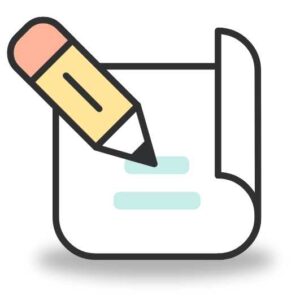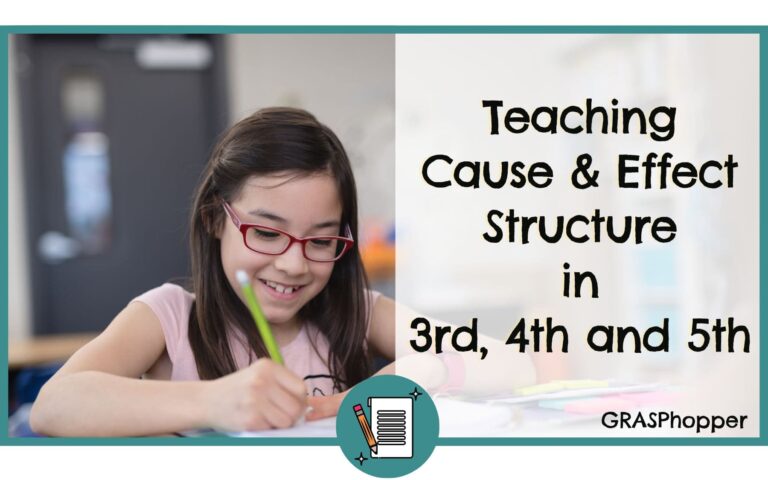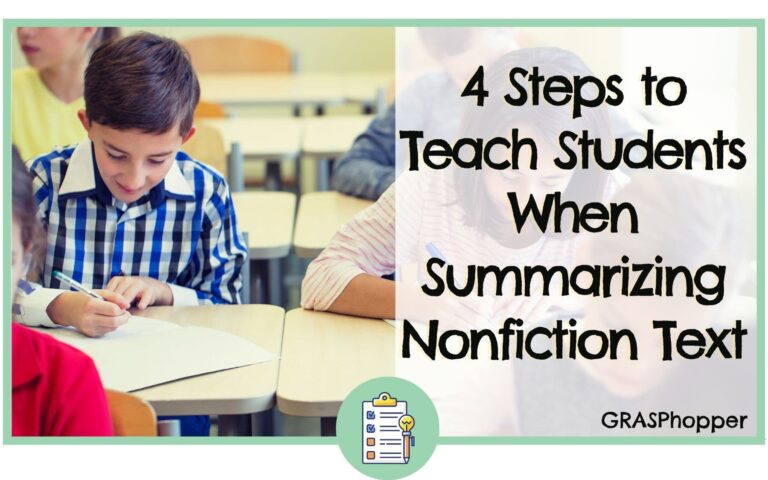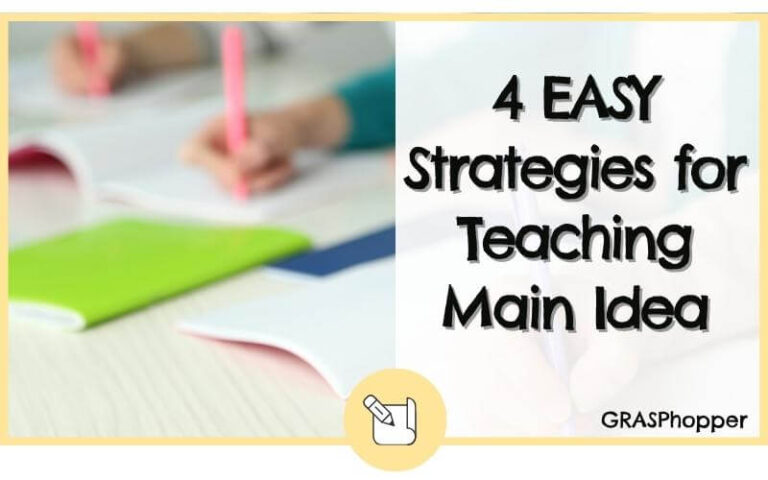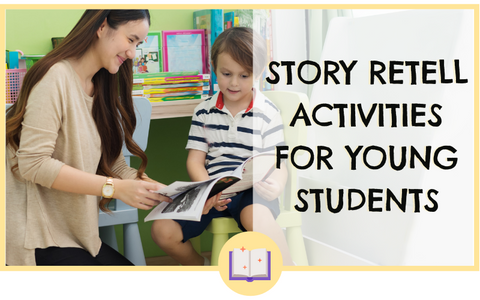
A few weeks ago, we let you in on our 3 secrets for teaching foundational story retell skills. If you already forgot (we know it’s a busy time) let us give you a quick reminder. The foundational skills that younger learners need for story retell are vocabulary, sequencing skills, and working memory.
Now you might be thinking, “There is so much to tackle, where do I even begin?”
We have lots of story retell activities and ideas to make teaching these skills simple. So, let’s hop right in!
Foundational Skill #1: Vocabulary
Understanding story retell vocabulary is the # 1 prerequisite skill your students need in order to master the art of retelling stories. As we noted in a previous post, the foundational story retell vocabulary words are beginning, middle, and end. Be sure to teach your learners some synonyms for these words too!
Now on to the story retell activities…
ACTIVITY IDEAS
#1: BOOKS
Books are one of the best tools to use with your students for teaching vocabulary. It is a functional and fun way to build their vocabulary and improve their comprehension. Holding and reading through books is our #1 way to effectively teach story retell vocabulary to students.
✅ TIP: Do you have students who run off when you take out a book? Try wordless picture books. These can be a powerful tool to engage your students who get overwhelmed when they see words on a page!
- Book choices: Rosie Walks and The Gingerbread man.
- Wordless Books Choices: Hank Finds an Egg, Pancakes for Breakfast, Chalk, and The Snowman.
- While reading, model the of use the terms beginning, middle, and end (and their synonyms) and point to the corresponding pages.
- Use phrases like “In the beginning of the story,” and point to the first pages of the book.
- Later, take turns showing the different parts of the book and practice using the terms.
- Look at and discuss what is happening in the pictures at different parts of the book while using the terms beginning, middle and end.
- Example: “In the middle of the book, we saw…”
- After reading, give your students paper or a white board (save the trees!) to draw what happened in the beginning, middle and end of the book.
- Have students practice using the terms as they talk about the pictures that they drew!
Check out the books below and help support local bookshops!
#2: 3-STEP PICTURE SEQUENCING
Putting 3 pictures of an activity or story in sequential order is a great method to work on story retell vocabulary. It also helps learners visually organize ideas.
- With permission from parents/guardians, take pictures of your learners performing an activity (e.g. washing their hands). You can also have families send in pictures of activities that they perform around the house.
- Lay the photos in order and explain what is happening using the story retell vocabulary words.
- E.g. Say “In the beginning you turn on the water,” while pointing to the corresponding photo.
- Use 3-step sequencing pictures of different activities.
- There are many sequencing resources that you can purchase or find for free. Just do a quick online search for “3-step sequencing cards.”
- There are so many activities to choose from! One way to organize yourself is to use seasonal activities. Our seasons sequencing activities will keep students engaged, while they learn story retell vocabulary with relevant topics!
#3: ROLE PLAYING
Who doesn’t love to role play? Get out of your seats and move your bodies while learning! In case this term is new to you, role playing a story retell is when your student act out the story or activity by pretending to be different characters.
- Be the director! Ask students to act out what happened first, next or last from a familiar book or activity! This is a fun activity where your young students will think they are just having fun, even though they are actually learning too!
- While one group of students is acting out a scene, have your other learners hold up signs that say beginning, middle, end.
- With permission, you can film your students acting out a story. Then watch the video and talk about what they did in the beginning, middle, and end.
Foundational Skill # 2: Sequencing
When your students learn the foundations of sequencing (putting things in a logical order) you are giving them the building blocks to be able to analyze patterns, comprehend information, follow directions, and make predictions. This second prerequisite skill to story retell is essential for all learners!
ACTIVITY IDEAS
#1: TOYS AND PLAY
What student doesn’t love playing with toys at school? Let’s use this to our advantage! Playing with toys is a hands-on way of engaging young learners. Don’t be afraid to get on the floor with your students and let them choose the toys.
✅ TIP: Narrate what your students are doing while playing. Emphasize the sequences they are doing throughout their play.
- Pretend play! You can use different themes when engaging in pretend play.
- One fun example is preparing for a tea party: Your students can sequence everything from the sequence of making the tea, to preparing the table, and who gets their tea first, next and last!
- Set up times when you do it wrong. Make your students laugh and learn by making a mistake in the order of the sequence! Make sure to emphasize UH-OH this is not the right sequence.
- e.g. If you are playing with a kitchen, you can eat the food before you cook it. Then you can model the correct sequence and have the students try it out!
#2: TRANSITIONS
Finding functional opportunities throughout the day to focus on sequencing, helps your students to generalize these skills.
- E.g. It is time for recess and your class needs to line up! This is the perfect time to work on sequencing skills.
- Line up in the classroom.
- Have your student point to the beginning, middle, and end of the line.
- Ask “What student is at the beginning of the line,” “Who is in the middle of our line” and “What student is at the end of the line”

#3: SEQUENCING CARDS
Here are our 5 steps to teach your students how to sequence with sequencing cards.
- Lay out the sequencing pictures next to each other. (Start with a familiar sequence that they do often.)
- Give students a piece of paper with boxes labeled 1, 2, 3 , or if they can read, a paper with boxes labeled first, next, last or beginning, middle, and end.
- Show your learners the sequencing pictures. Ask them to put the picture that shows what happens first in the box labeled 1/beginning/first. You can prompt with “What do you do first?”
- Give them time to find the picture.
- Then repeat for the rest of the pictures.
- Have them retell you the story or activity using the pictures.
- If it is not right, ask them to try again.
- If they are still unable to put it in the correct order, give them a model. Show them how it should be done!
- Then mix up the pictures and ask them to try again!
✅ TIP: Try using our story retell activities to practice these skills.
Start with 3-step sequences. When your learners are able to complete those, it is time to move onto 4+ step sequences. This will build up their sequencing skills and prepare them to tell longer, complete stories.
#4: FOLLOWING DIRECTION GAMES
Following directions games are a great tool to help students learn to sequence!
- Simon says, is one activity that you can use to improve your students’ sequencing skills from short simple directions to longer and more complex ones. Remember that knowing the vocabulary is essential before making your directions more complex.
- E.g. “First touch your toes, then clap your hands.”
- Coloring is an engaging and easy activity for following directions. Your students can practice their sequencing skills and vocabulary!
- Be sure to give specific directions about what is expected of them during the activity. Make sure the pictures have different parts that they can color in.
- E.g. If you give them a picture of a person, say “First color the shirt red, then color the pants blue.”
- Young learners love to play with puzzles. This can be a simple activity to improve their sequencing skills. Tell your learner the order that you want them to complete the puzzle.
- E..g. With a zoo animals puzzle say, “First, put the elephant in the puzzle, second put the zebra in the puzzle, and third put the monkey ”
Foundational Skill #3: Working Memory
Are your students struggling to remember parts of the story? Our third prerequisite skill for story retell is working memory. Our working memory allows us to hold onto and manipulate pieces of information in a short amount of time.
If this foundation is weak, your students will have a difficult time retelling stories. So, hop on down to learn how to help them.
HOW CAN WE IMPROVE WORKING MEMORY?
We recommend using these 6 strategies to help young learners who struggle to hold onto information. Below you will find these working memory strategies and how to incorporate them in activities. These working memory strategies are:
- Chunking: This is when you, as an educator, break down information into more manageable parts.
- Visualization or mental imagery: Your students can paint a picture in their mind, or pretend to watch a movie in their head about what is happening in the activity or story.
- Repetition: Both you and the learner can engage in repeating the information that was said.
- Put it on paper: Put the words on paper either by drawing or writing.
- Previewing: Review vocabulary, ideas, or information prior to teaching.
🚨 Try a variety of these strategies to see which works best with your students!
ACTIVITY IDEAS
#1: GAMES
Some students are reluctant to complete academic work. Games are the perfect activity for them. Games can help increase participation of your students, while fostering learning.
- Memory card matching games are a fun activity to work on working memory. Start simple with only 6 memory cards and increase as your students’ working memory skills strengthen. You can personalize the game by printing out motivating, high interest pictures or use pictures that correspond to a topic they are studying in class.
- Preview the vocabulary before you play to make sure your students know what the pictures are!
- While playing, use the working memory strategy called visualization. Once they flip over the cards, have them pause and visualize the game board in their mind. Keep doing this throughout the game to help them remember where specific are on the board

- Going on a picnic is an entertaining game where students repeat the information that was said before their turn and then add their own idea.
- Have students add items in the order of the alphabet to help trigger their recall of what the person said before them
- This activity targets the repetition working memory strategy.
#2: DRAWING OR COLORING
Your students have different styles of learning. For visual learners, drawing and coloring can enhance their ability to learn faster, comprehend easier, and express themselves!
- Coloring is an engaging and easy activity for improving working memory. Your students can practice their vocabulary, and sequencing too!
- A strategy you can practice during this activity is chunking. Give them small directions on what to color.
- This is a great opportunity to slowly increase the amount of information that your student can hold onto.
- A strategy you can practice during this activity is chunking. Give them small directions on what to color.
- Your students can draw pictures of what they are doing throughout an activity.
- This is a simple way to practice the Put it on Paper working memory strategy.
Get creative! There are so many opportunities during the day to incorporate strategies for working memory.
These are just some activities you can use to help your students develop foundational retell skills! Before getting to the story retell activities, we recommend your learners watch this story retell teaching video! It’ll get them ready for all the fun activities to come!
THANKS FOR HOPPING BY!
WANT MORE? Sign up for our newsletter.
What are some of your favorite story retell activities for young learners?

